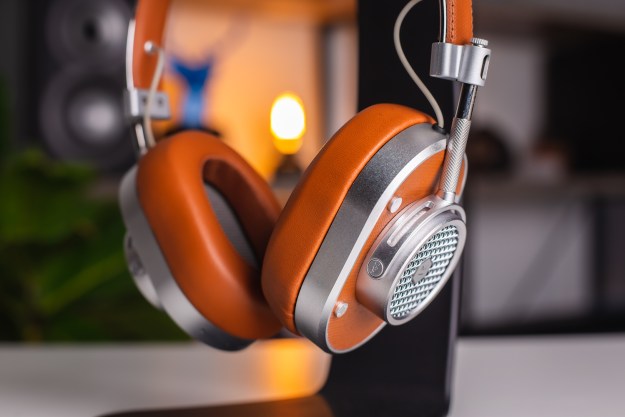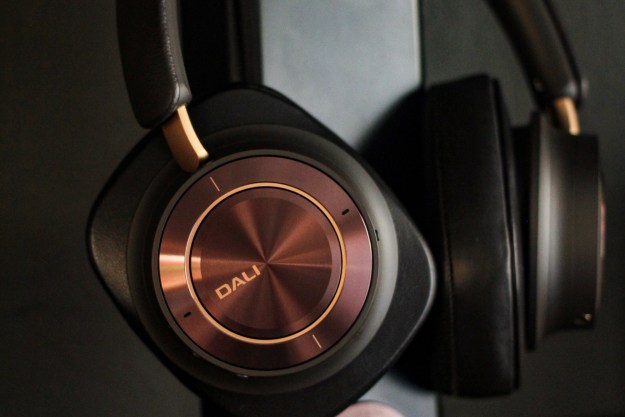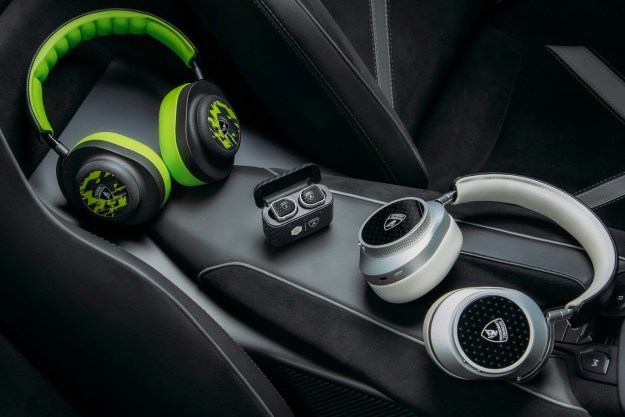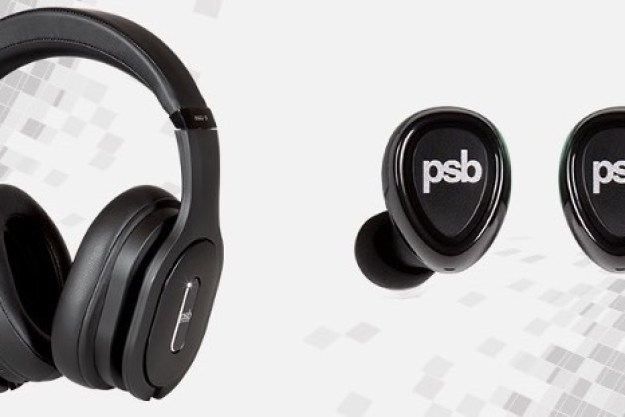
“Combining high style and good sound, the MH40 Wireless update a classic with wireless convenience.”
- Gorgeous design
- Comfortable
- Top-quality materials
- Clear and detailed sound
- Very good call quality
- Short battery life
- You can't listen while charging
- Not a lot of bass
Editor’s note: there’s a newer version of these wireless headphones. Check out our Master & Dynamic MH40 Wireless 2023 review.
Five years ago, Master and Dynamic entered the audio world with its first product, the MH40 headphones. Their elegant and unique design captured people’s attention, as did their sound quality. But five years ago, Apple and other smartphone makers hadn’t yet issued the death warrant for the headphone jack.
As such, the MH40’s wired design was still appropriate. But times have changed considerably. We now live in an era of full wireless audio, whether you prefer to get your tunes from wireless headphones or true wireless earbuds. With this in mind, Master and Dynamic (M&D) has re-introduced its freshman offering as a wireless set of cans: The $299 MH40 Wireless.
All of the touches that made the MH40 a breath of fresh air remain, like the undeniably cool retro-aviator design and premium materials. But make no mistake: These aren’t just the original MH40s without the wire; they’ve been fully re-thought for travelers in 2019 and beyond. Let’s take a closer look.
Light, airy, and elegant
You simply can’t discuss M&D’s products without spending some time discussing their design. In a headphone market that is largely dominated by hulking black plastic earmuffs, the MH40 Wireless manage to exude classy sophistication, ruggedness, and lightness all at the same time. They combine leather, metal, aluminum, and lambskin to create a sense of luxury.
Considering the almost total absence of plastic, these cans are surprisingly light. At just 267 grams, they’re almost a third lighter than the original MH40s and almost as light as Sony’s featherweight WH-1000XM3. The use of metal earcup slider posts instead of the more conventional adjustable headband adds to the retro vibe without making it look like you’re wearing antennas — something I found was the case on the similarly-styled House of Marley Exodus ANC.

The one thing I wish was here: The folding hinge that M&D introduced on its MH30 headphones. The MH40 Wireless aren’t big, but they would take up less room in your bag if they could fold.
While not as streamlined as some of the more integrated headphones from Sony or Beats, the MH40 Wireless make a style statement before you even switch them on.
Comfort with caution
The over-the-ear MH40 Wireless have memory foam earpads, which I found very comfortable. They’re magnetically latched to the earcups — a convenient feature should you ever need to replace them. When seated around your ears, they do a good job keeping out unwanted sounds.
However, I struggled a bit with their tendency to shift around on my head unless I sat perfectly still. It took me a while to figure out why, but I believe it’s a combination of the earpads’ profile (there’s only a small amount of contact surface), the mass of the earcups (all of the weight sits quite low), and the small amount of tension provided by the headband.

I should note that my head is much smaller than average for a man, so this may not be an issue for you, but nonetheless, I wouldn’t count on using the MH40 Wireless at the gym.
On the upside, the smaller shape of the earcups makes them way more comfortable when worn around the neck — for what that’s worth.
Scintillating sound
Are you a fan of deep bass that you don’t just hear, but actually feel as a reverberation through your skull and internal organs? If yes, don’t read any further; the MH40 Wireless are not for you.
Tuned for precision, not power, these

What exactly does that mean? Let’s take David Guetta’s Titanium as a case in point. In the opening minute of the track, we get the introductory notes with Sia’s vocals. It’s rendered with beautiful clarity and the MH40s revealed a depth to Sia’s voice I hadn’t heard before. It gave me goosebumps. As it builds toward that first crescendo, your expectation builds as well — toward that beat drop you know is coming.
Except that it never quite does. As delicious as the soaring highs and detailed midrange are, the lack of depth in the lows might leave you wanting more.
Take the call
Call quality may not be the biggest factor in choosing a set of
Talking to Siri proved equally accurate. Unfortunately, with no pass-through mode, my own voice sounded muffled to me, increasing the likelihood of yelling. Very few non-
Quite a pair
Setting up the MH40 Wireless and getting them paired was quick and painless. They showed up quickly in both iOS and Android Bluetooth menus and paired almost instantly. Better yet, the wireless connection remained highly stable, even when I wandered several floors away from my iPhone — something that other
You get a pair of cables with the MH40s — a USB-C for charging and a USB-C-to-analog for wired listening. That cable is highly unusual in the wireless headphone space, as most companies simply equip their cans with a standard 3.5mm or 2.5mm headphone jack. The MH40 just has the single USB-C port and uses it for both duties.
Though it works just fine, there are two drawbacks to this arrangement: You may have trouble replacing the audio cable if you lose or misplace it, and you can’t listen to the
Speaking of recharging, if you’re planning on a flight half-way around the world, take a battery pack: The MH40 Wireless last only 18 hours between charges — a surprisingly small amount of time when compared to the monster lifespans on offer at the same price. Still, you can get half of that time back with only 30 minutes of charging, so it’s not too much of a burden to bear.
Our take
The Master and Dynamic MH40 Wireless take all of the best parts of the original MH40s and make the package a whole lot sweeter for just $50 more. They’re at their best when you’re sitting in a comfortable chair and you’re able to appreciate the impressive detail and clarity these
Is there a better alternative?
Yes. You’ll find a number of over-the-ear
How long will they last?
Materials and build quality on the MH40 Wireless are very good. I expect that with the appropriate amount of care, they’ll last for many years. One thing I can’t vouch for is the rechargeable battery. It’s not user-replaceable (which is typical of
Should you buy them?
Yes. They may not pack the kind of value you’ll get out of other
Editors' Recommendations
- Marshall’s latest headphones get 100 hours of battery life and wireless charging
- The 6 best wireless headphones for watching TV in 2024
- Best Sony WH-1000XM5 deals: Save $70 on the wireless headphones
- Raycon launches $149 Everyday Pro wireless earbuds and headphones
- Master & Dynamic’s next luxury headphones can tell you when your brain need a break





